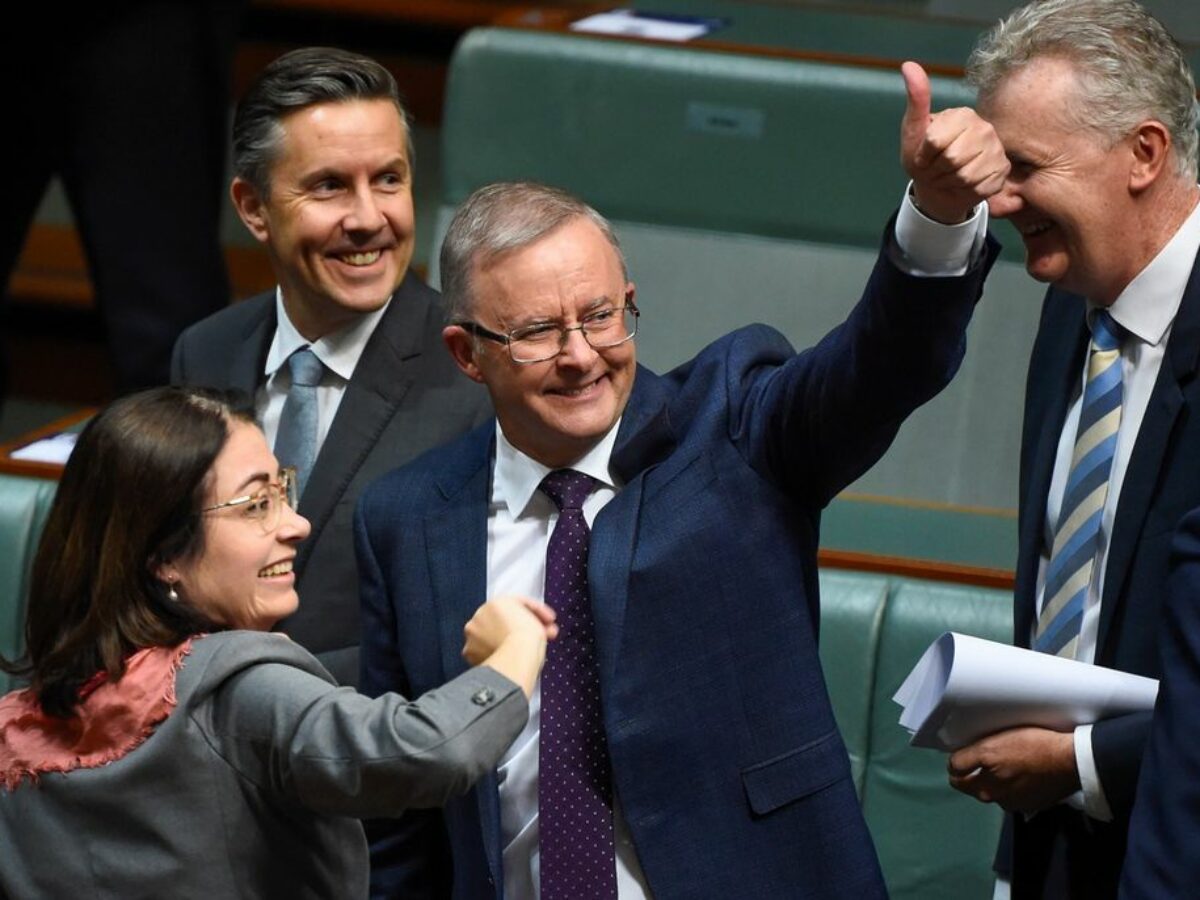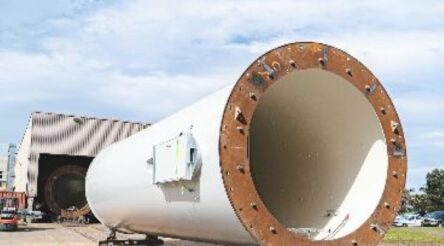Labor’s national reconstruction fund: a path to reindustrialisation?

The shadow of COVID and the associated policy failures of the federal government hang heavy over the coming election, with the campaign certain to be chaotic and full of distractions. Here Lance Worrall looks at the biggest policy idea launched to date – Labor’s National Reconstruction Fund.
Many voters were shocked to discover early in the pandemic that Australia lacked the capability to produce even basic protective equipment, and therefore almost everything else required in an emergency. Anxiety already existed about Australian deindustrialisation and loss of sovereign capability: it took the pandemic to raise the dial and crystallise those anxieties.
That said, the ‘pre-election’ campaign has had little to say about the future structure and direction of the national economy, save one policy of substance: Anthony Albanese’s National Reconstruction Fund (NRF).
The NRF would target reindustrialisation, nation-building, economic diversification, regaining lost sovereign capabilities, adding value to our vast resources, and accelerating the transition to the zero-carbon economy.
The pandemic calls for national reconstruction, it says, probably recalling Chifley, HC Coombs and the nation-building Department for Post War Reconstruction. Reconstruction requires leading, active government and positive directions-setting for the future.
But before details, we need some context.
‘Snap-back’: The Morrison status quo
The Morrison government sees no need for any fundamental reset of national economic directions, only some marginal under-scaled programs that meet public relations imperatives ahead of economic impact. There is no commitment to reindustrialisation, a national industrial strategy or setting different directions for lasting COVID recovery.
There is no substantial drive to recover lost industrial capabilities for national sovereignty.
The PM’s vision for post-pandemic Australia was a slogan that meant ‘no change’: to ‘snap-back’ to where we were before COVID.
This means Australia remaining at the bottom of the OECD for manufacturing GDP shares, topping the OECD for manufacturing import dependency, and plummeting economic complexity. It means continuing lock-in to declining forms of resource extraction, continuing to export our high value mineral resources in low value unprocessed form, and forgoing the industrial benefits of rapid decarbonisation.
A formula for lower living standards over the longer term.
A New Deal: Change course
First the GFC and then COVID have changed minds and policies here and internationally.
Many governments and their economic advisers have swung in favour of active government, direction-setting economic strategies, and industrial policies for reindustrialisation linked to wider purposes, such as reducing inequality and decarbonisation.
Many now support public intervention and leadership beyond that acceptable previously.
A seismic shift is seen even within former citadels of orthodoxy, like the IMF and World Bank.
New Deal-inspired movements, administrations and authorities in the US and Europe have embraced these expansive ideas of industrial policy.
They were also found in calls for a National Industrial Strategy in the @AuManufacturing and the Australian Manufacturing Forum’s New Deal Plan for Manufacturing crowd sourced from readers in 2020.
Labor’s National Reconstruction Fund
The NRF policy is significant and substantial. COVID exposed gaps in our industrial structure and sovereign capabilities, so Australia must once again be a country capable of manufacturing, of making things.
Modelled on the Clean Energy Finance Corporation (CEFC), the NRF would lead investment in key sectors through loans, equity, guarantees and co-investment.
In partnership with the private sector, including superannuation funds, the $15 billion commitment could unlock a total $30 billion in investment. It links to other Labor policies such as Rewiring the Nation (national electricity grid), local purchasing and rail manufacturing.
More detail will be needed, but the NRF is a positive directional policy, focussing on priority sectors. These have good growth prospects, but also help us deal with largescale problems like climate change, food security, renewal of our urban transport systems, and ensuring capabilities in medicines, vaccines and health technologies:
- Value-adding in resources through domestic processing (e.g., aluminium and lithium batteries)
- Value-adding in agriculture, forestry and fisheries
- Transport – build car, train and shipbuilding supply chains
- Medical science – greater sovereign capability in essential supplies
- Renewables and low emission technologies (wind turbines, solar panels, lithium batteries, low carbon steel and aluminium, hydrogen electrolysers, etc.)
- Defence capability – building the supply chain of Australian companies
- And enabling capabilities – systems, AI robotics, etc.
This is incomplete and more strategic integration is needed. Dynamic linkages can be developed between these sectors as well as other industrial opportunities not included here.
But the NRF is of a scale to make a difference nationally, and sets positive directions and sectoral priorities. Without these priorities there is no national strategy: just a scatter-gun approach and likely, grants and favours disproportionately to advantage the government and its allies, ahead of the sustainable development of our economy.
The NRF would be enshrined in legislation with decisions made by an independent board. This is protection against using the NRF in the manner of sports grants, park and rides, etc., with funding decisions made by the Minister and PM guided by colour-coordinated spreadsheets, for political benefit.
The NRF is a clear and bold advance. By itself, it is not the National Industrial Strategy Australia needs. It focuses on investment to the priority sectors. Although this is critical, a comprehensive industrial strategy is a complete cycle of forward-looking processes, policies and interventions to set whole industry sectors on to positive developmental pathways.
Although it is not yet a full industrial strategy, the NRF is certainly a major forward step.
Lance Worrall was a policy adviser to Mike Rann as both Opposition Leader and Premier of South Australia. He has been a senior public servant and most recently worked on industrial transformation initiatives for the Innovative Manufacturing Cooperative Research Centre and Flinders University. He is the author of many reports on economic and industrial development.
Picture: Anthony Albanese
Subscribe to our free @AuManufacturing newsletter here.
@aumanufacturing Sections
Analysis and Commentary Awards Defence Manufacturing News Podcast Technology Videos










